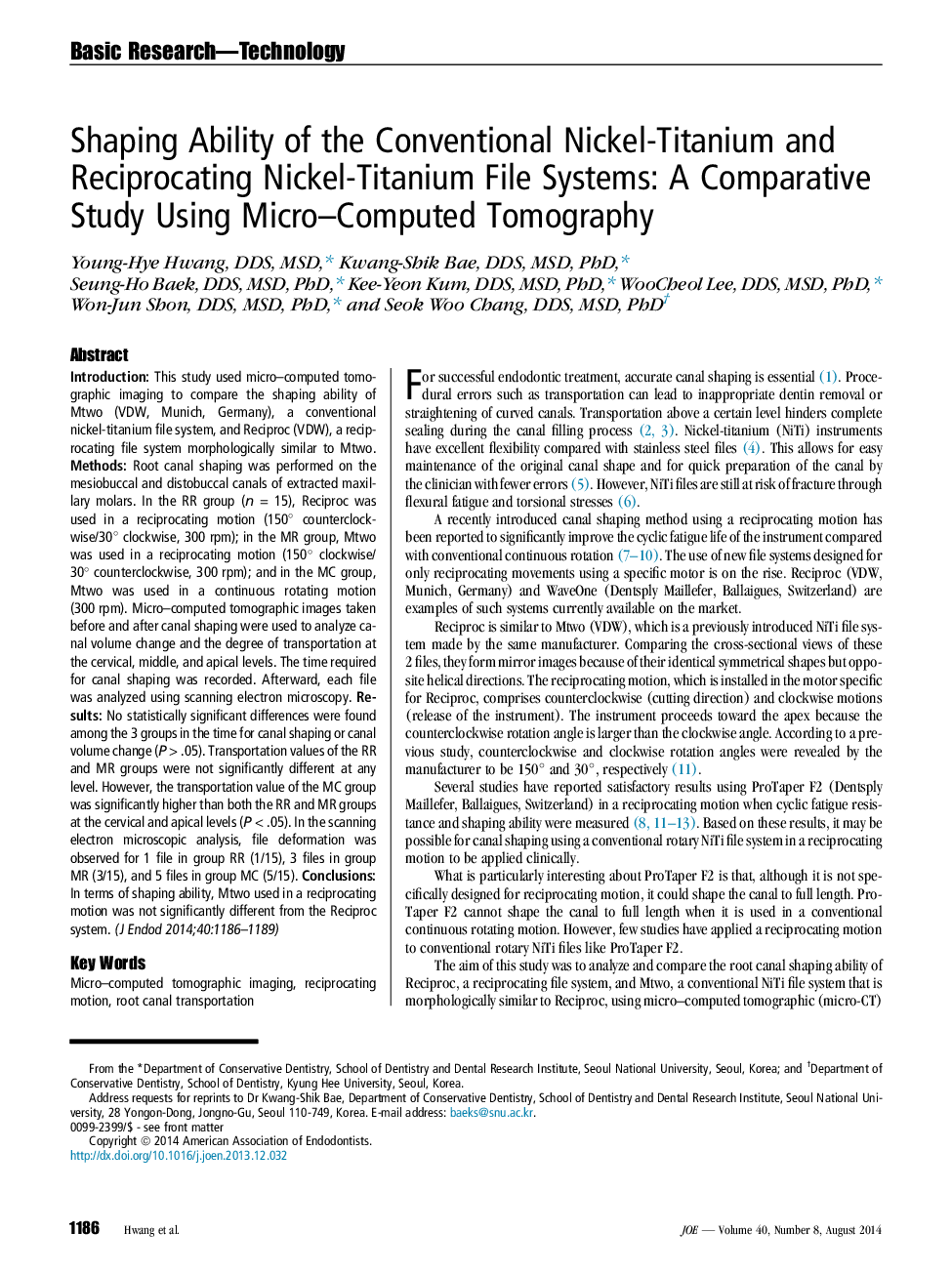| Article ID | Journal | Published Year | Pages | File Type |
|---|---|---|---|---|
| 3146747 | Journal of Endodontics | 2014 | 4 Pages |
IntroductionThis study used micro–computed tomographic imaging to compare the shaping ability of Mtwo (VDW, Munich, Germany), a conventional nickel-titanium file system, and Reciproc (VDW), a reciprocating file system morphologically similar to Mtwo.MethodsRoot canal shaping was performed on the mesiobuccal and distobuccal canals of extracted maxillary molars. In the RR group (n = 15), Reciproc was used in a reciprocating motion (150° counterclockwise/30° clockwise, 300 rpm); in the MR group, Mtwo was used in a reciprocating motion (150° clockwise/30° counterclockwise, 300 rpm); and in the MC group, Mtwo was used in a continuous rotating motion (300 rpm). Micro–computed tomographic images taken before and after canal shaping were used to analyze canal volume change and the degree of transportation at the cervical, middle, and apical levels. The time required for canal shaping was recorded. Afterward, each file was analyzed using scanning electron microscopy.ResultsNo statistically significant differences were found among the 3 groups in the time for canal shaping or canal volume change (P > .05). Transportation values of the RR and MR groups were not significantly different at any level. However, the transportation value of the MC group was significantly higher than both the RR and MR groups at the cervical and apical levels (P < .05). In the scanning electron microscopic analysis, file deformation was observed for 1 file in group RR (1/15), 3 files in group MR (3/15), and 5 files in group MC (5/15).ConclusionsIn terms of shaping ability, Mtwo used in a reciprocating motion was not significantly different from the Reciproc system.
